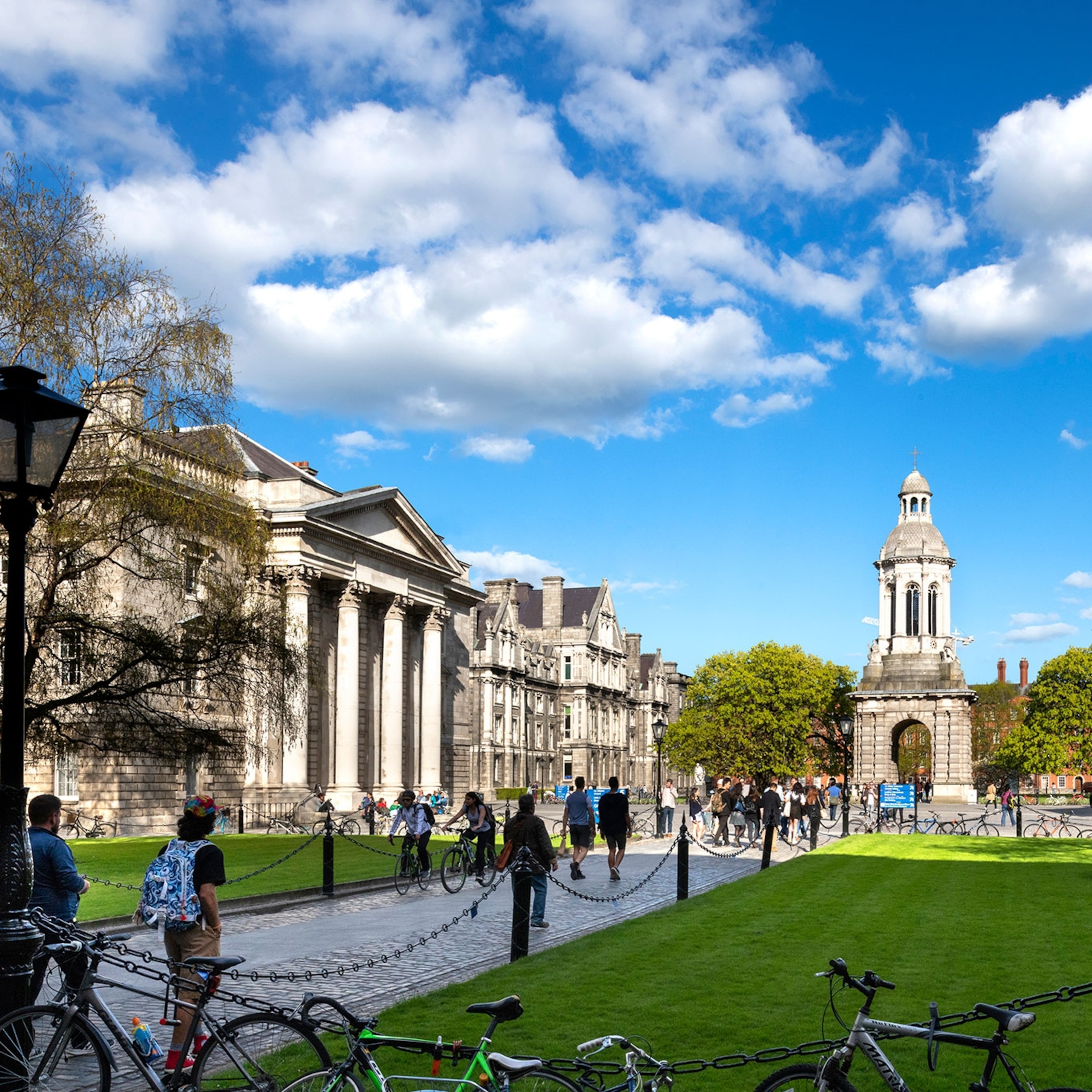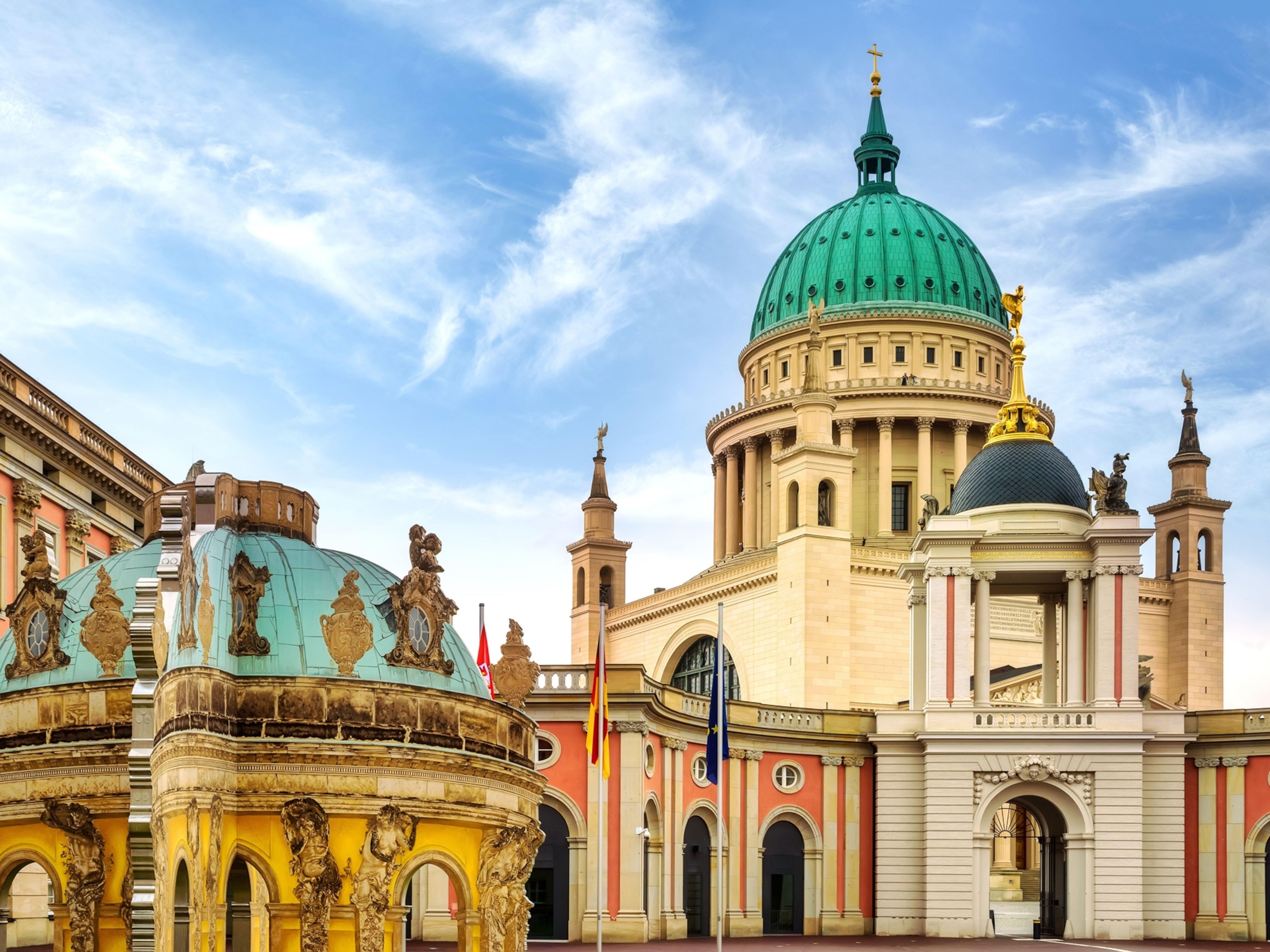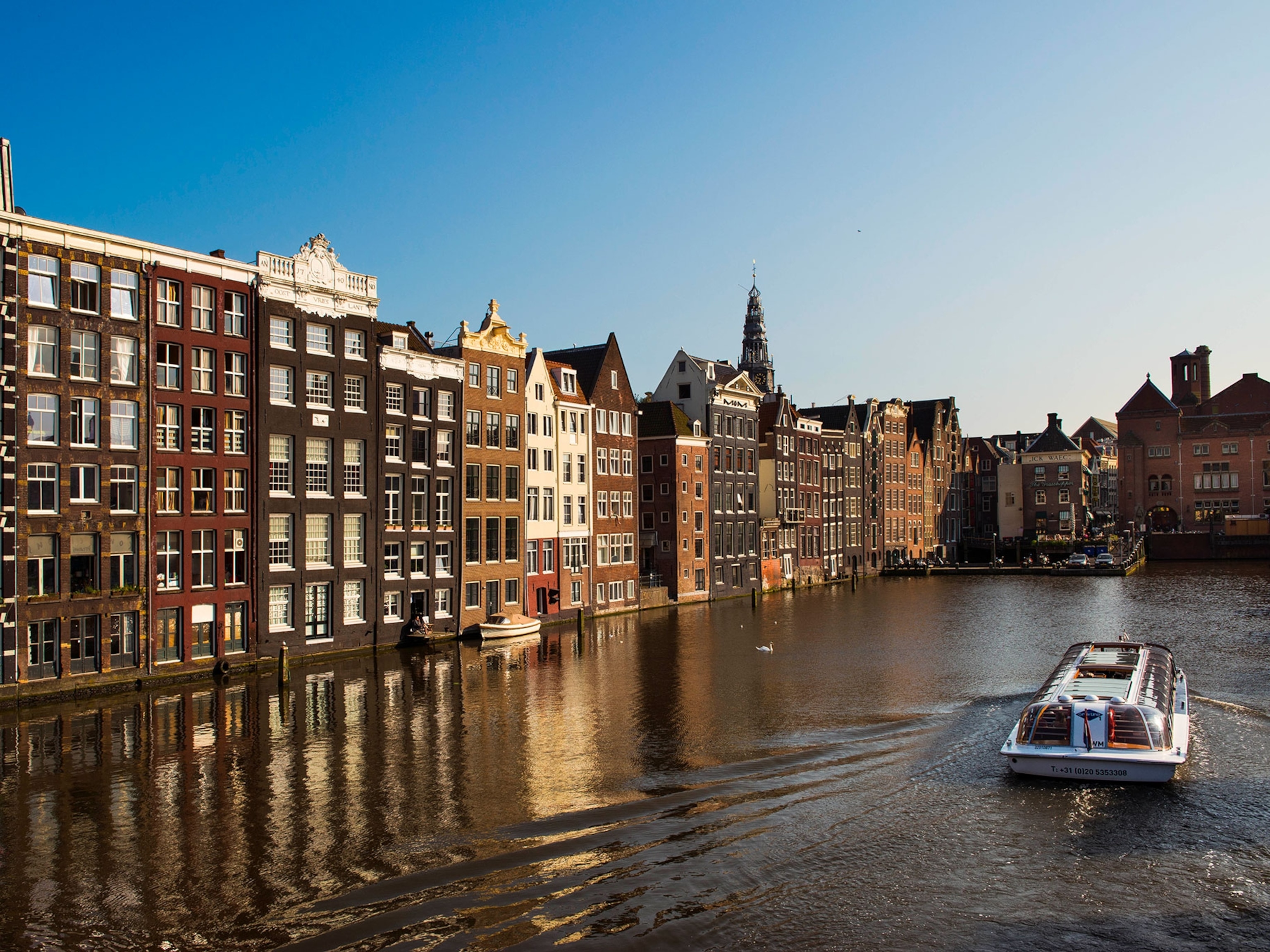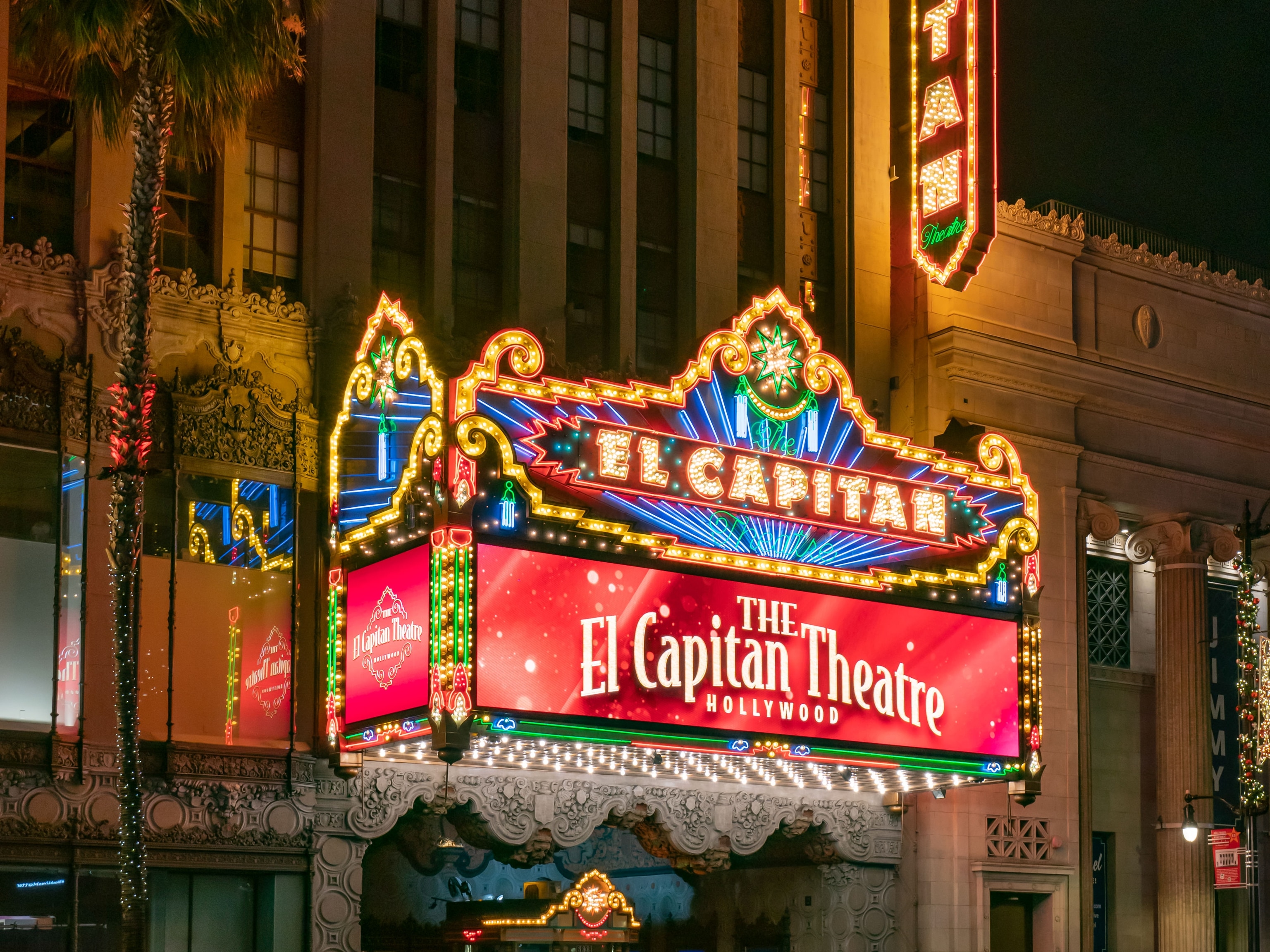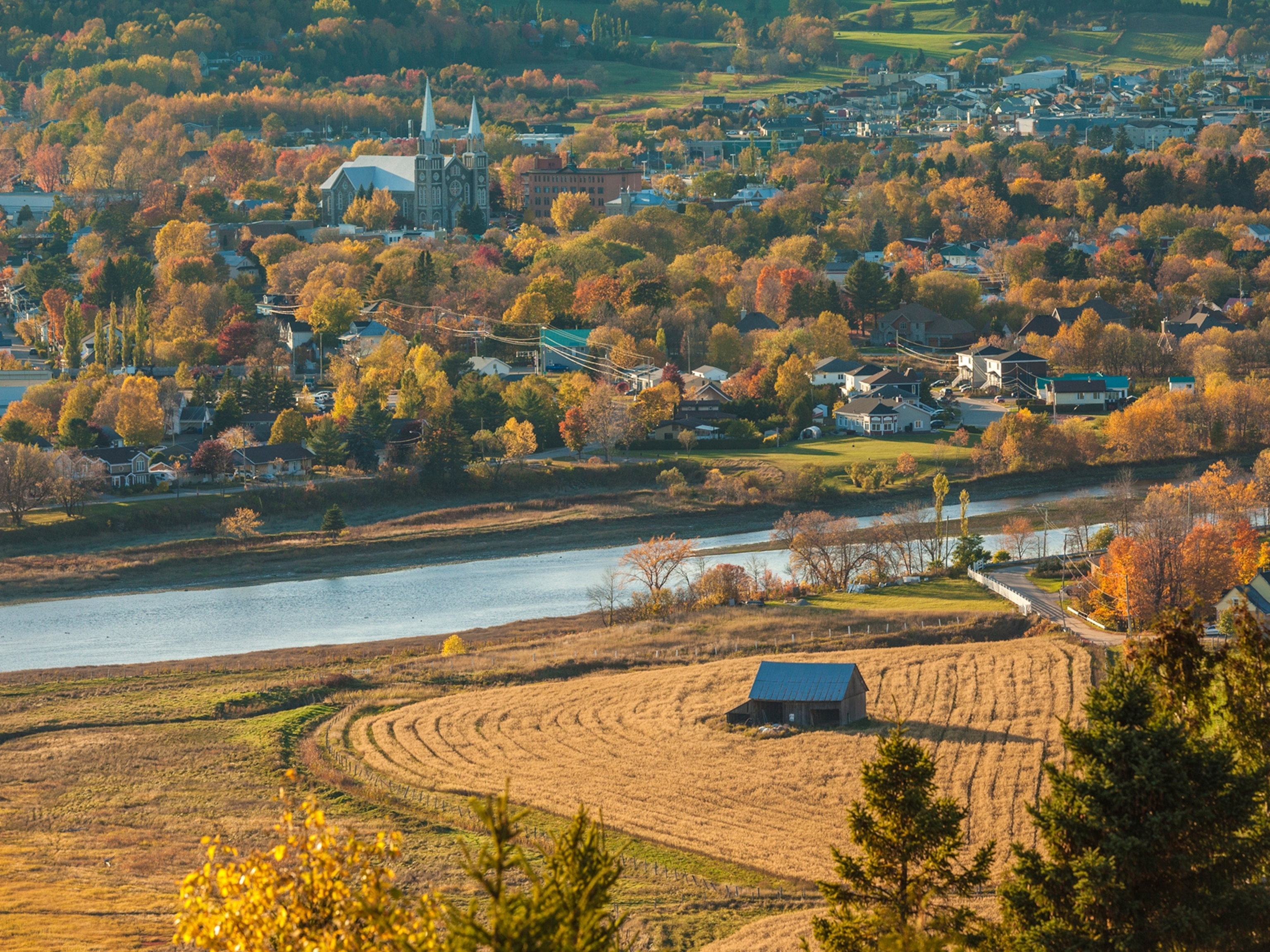
Visit Rotterdam as it transforms itself into a floating city
This flood-prone Dutch city, one of the world’s largest ports, is meeting the challenges of rising seas with innovative architecture.
Facing the North Sea, sliced by three major rivers, and dotted with lakes and streams, the low-lying Netherlands has long been vulnerable to flooding. After the devastating deluge of 1953 killed almost 2,000 people, the proactive Dutch government devised the ambitious Delta Programme, creating dams, dikes, and sophisticated, computer-controlled storm barriers. The ensuing years brought additional flood-taming tactics such as catchment areas that mimic natural river floodplains, and “green dikes” covered in water-absorbent clay and grass to dampen waves. These national initiatives have also helped the country address the growing global problem of rising seas.
Rotterdam, the Netherlands’ second largest city, tackles climate change with a singular inventiveness. Flattened during World War II, the city remade itself, embracing daring architecture. With 85 percent of this delta city below sea level, Rotterdam manages water overflows with creative solutions, such as plazas, garages, parks, and gardens designed to act as temporary reservoirs.
“These [and other] urban projects will make the city better equipped to deal with rainwater, improve our urban mobility, and reduce heat stress, and in effect…make our city more resilient, healthier, and enjoyable for all,” says Arnoud Molenaar, Chief Resilience Officer of Rotterdam.
Here’s how visitors can check out some of these innovative venues themselves.
Buy milk from a floating farm
Some 40 brown-and-white Meuse-Rhine-Issel cows spend most of their day in an airy stable on the top level of the three-tier Floating Farm, a micro-dairy moored in the Port of Rotterdam. (They can also graze on shore.) Robots maneuver about, available to milk and feed them, and to scoop up manure. A solar panel-lined canopy provides the cows with shade and also collects rainwater that’s purified for them to drink. Milk, buttermilk, yogurt, and butter are processed on the middle tier, and wheels of Gouda-style cheese mature on the cooler, lowest level sitting below the water’s surface. “Bringing food production to the city not only reduces food miles but also creates awareness about food production,” says Minke van Wingerden, co-founder of the Floating Farm.
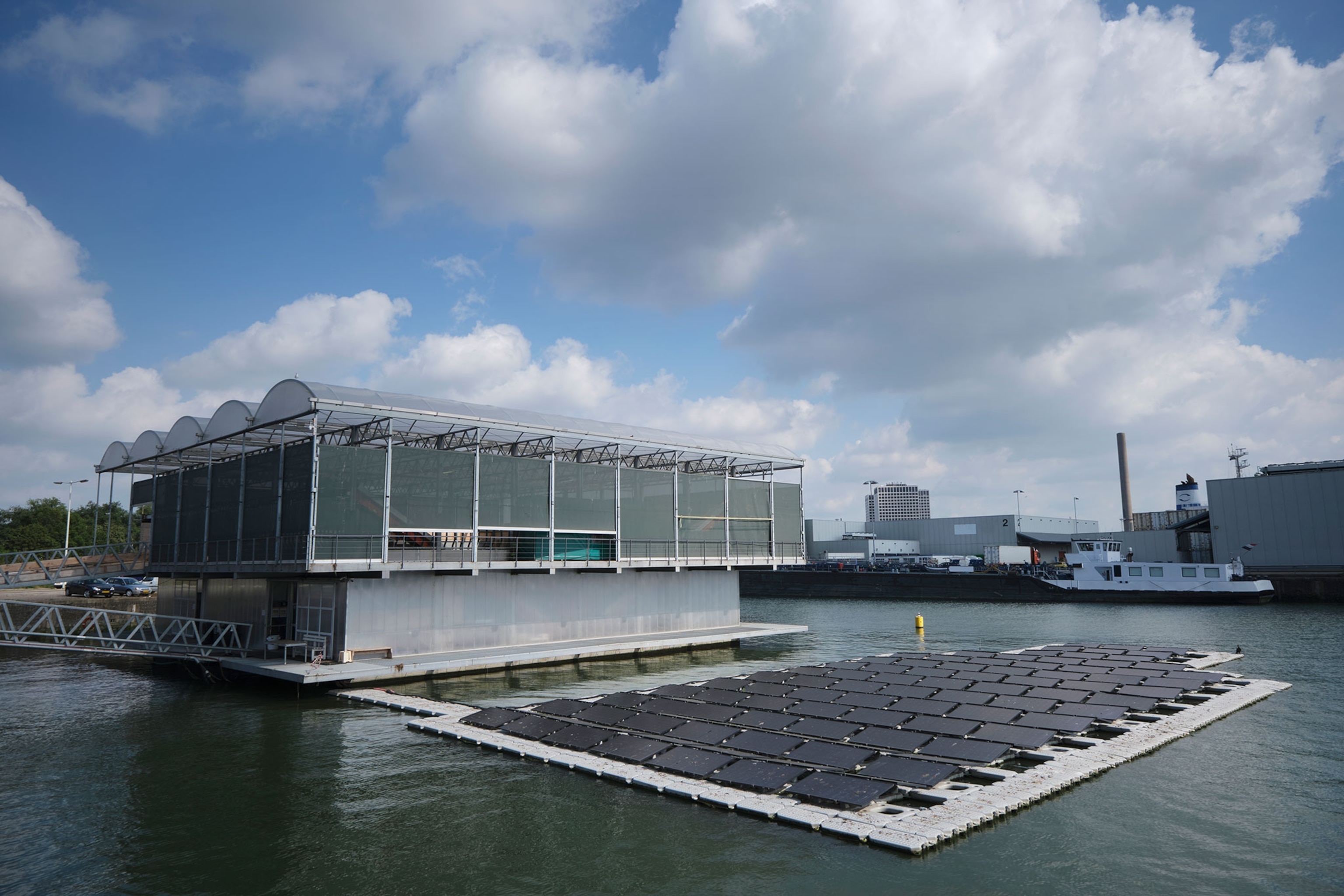

Visitors can buy dairy products in the farm’s shop on shore, which is open from Tuesday to Saturday 10 a.m. to 5:30 p.m. They can tour the floating farm itself at these times, following the elaborate signage that guides them through the facilities. They can roam the top floor, watching cows get milked, and then navigate to the level below to see milk- and yogurt-processing.
Stay overnight in a wikkelboat
Solar-powered and sustainably made, wikkelboats are two-room boutique houseboats, available in Rijnhaven and Wijnhaven harbors (with more locations in the works). Each is constructed from two dozen layers of corrugated cardboard, making them light, while also providing soundproofing and heat insulation. (Their whimsical sounding name is apt, given that wikkel is Dutch for “wrapper.”) Varying in size and amenities, each of the wikkelboats has a well-stocked kitchenette, some a washer/dryer, and some with a five-person outdoor jacuzzi. Guests can rent water toys, including stand-up paddleboards, pedal boats, and canoes/kayaks. “Guests love unwinding in the jacuzzi while enjoying the urban landscape,” says CEO Sander Waterval. Wikkelboats are also available in the Dutch town of Den Bosch.
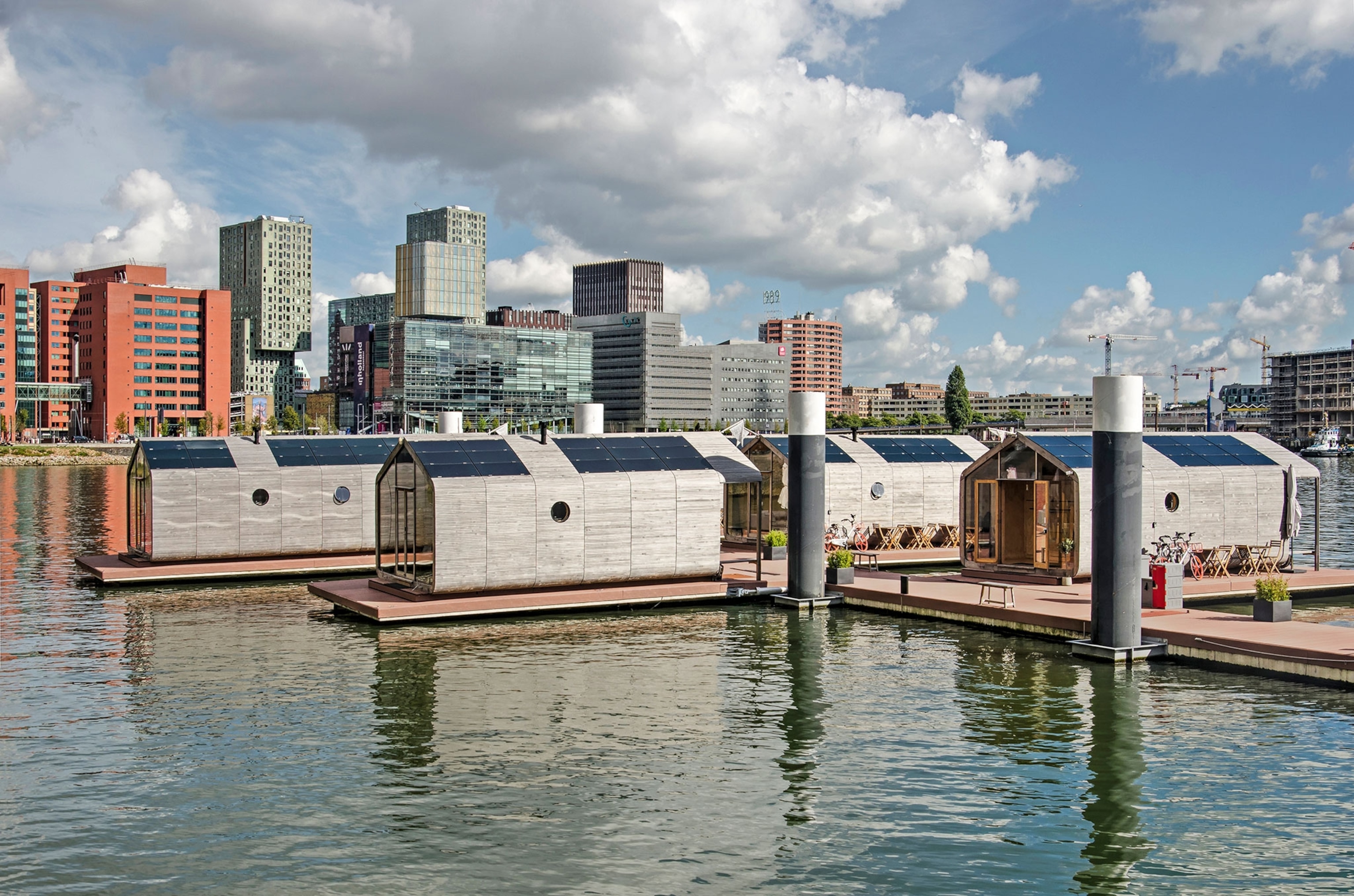
Savor vegetarian fare in a floating restaurant
A 60-foot-long floating gangway provides access to Floating Office Rotterdam (FOR), located in tranquil Rijnhaven, a former industrial harbor. Constructed of wood, this three-story building is carbon negative and energy positive, with a roof divided between solar panels and grass that absorbs rainwater, dissipates heat, and provides an ecosystem for birds. The cantilevered roof and balconies reduce overheating, and harbor water is used to warm or cool the interior as needed.
“Combining high-tech with low-tech solutions is an innovative take on sustainable architecture,” says Albert Richters of Powerhouse Company, the project’s architectural firm. In June, the company welcomes the public to its on-site office, as part of Rotterdam Architecture Month’s annual Open Office Day.
One of FOR’s tenants is the upscale restaurant Putaine, designed with abundant floor-to-ceiling windows. Helmed by acclaimed restaurateurs Eva Eekman and Michael Schook, Putaine serves a seasonal menu of small dishes, with a focus on vegetarian items. The artistically presented delicacies offer plenty of sensory surprises, such as barbecued avocado with green curry and yuzu. “We do our very best to operate as sustainably as possible,” says Eekman, who also stocks natural wines. In warm weather, visitors can dine or drink on the waterfront terrace, or take a dip in FOR’s pool.
(Is Amsterdam the new capital of cannabis tourism?)
Visit a floating villa
In Nassauhaven, a disused harbor, the Harbourlofts are 18 two- and three-story villas designed to be carbon-neutral. Each off-the-grid villa is equipped with solar panels, a water purification system, and a biomass installation or heat pump to generate heat. Residents—including the project’s architect, Pieter Figdor, who recently moved in—have access to e-charging stations and shared e-cars and e-bikes. Set on concrete pontoons and anchored to the harbor bottom with steel mooring poles, the lofts are highly stable, though you’ll still feel some motion. Adding to the green sensibility: the villas in this flood-prone area look out onto a nature-friendly tidal park developed both for the aesthetics and as an adaptation to flooding. (The plants help soak up water, as does the clay surface.)
De Rotterdam Tours offers a two-hour, guided floating city tour that includes visits to the quay or the terrace of a floating villa, as well as to the exterior of FOR and a wikkelboat ($527/group, plus $8/per person for a water taxi).

